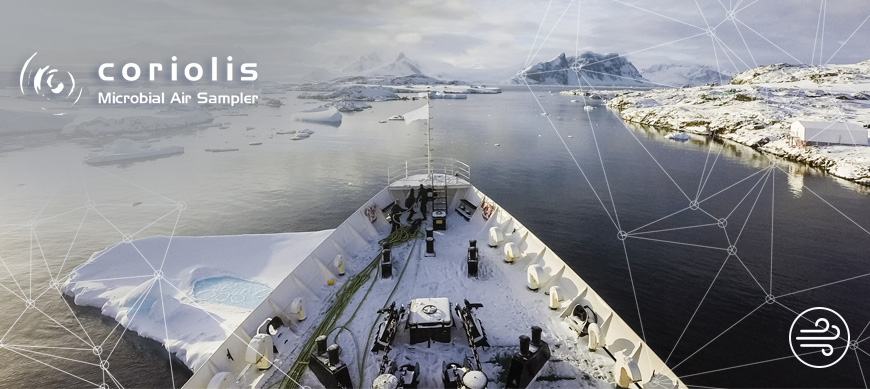Global warming is one of the main challenge worldwide for the coming years. Scientists have already warned the international community regarding the increasingly rapid melt of the ice caps and its dramatic consequences around the globe.
Polar regions are the most isolated place on Earth, uninhabited due to their harsh climate conditions. The study of this regions’ unknown bioaerosols biodiversity can bring a lot of answers to better measure the impact of our urban civilization to these desert areas.
The Black and Bloom team, is using the Coriolis µ to inventory and analyze all airborne “impurities” deposited during the melting ice season such as particles or microorganisms.
Innsbruck University (See app note) has also used the Coriolis µ in extreme condition of temperature and high altitude to document atmospheric microbial abundance and community composition. The aim of the study was to gain an understanding of the incoming aerial microbial fraction to various “inner alpine” and polar locations.
The Antarctic Circumnavigation Expedition (ACE), from the Swiss Polar Institute bring the Coriolis µ aboard a Russian icebreaker transformed into a floating laboratory for three months. Oceanographers, glaciologists and climatologists explored Antarctic’s forgotten islands and study the ability of microorganisms coming from civilized territory to colonize and adapt to Antarctic conditions.
Polar regions offer a wide range of unknown microbial population and there is still much to discover.
The Coriolis® µ is an innovative biological air sampler for bio-contamination assessment dedicated to air quality control and air quality monitoring in environmental and pollution research. Based on a cyclonic technology, combined to a high air flow rate, Coriolis® offers the most efficient particles collection in 10 minutes.
>> Find out more about Coriolis µ
